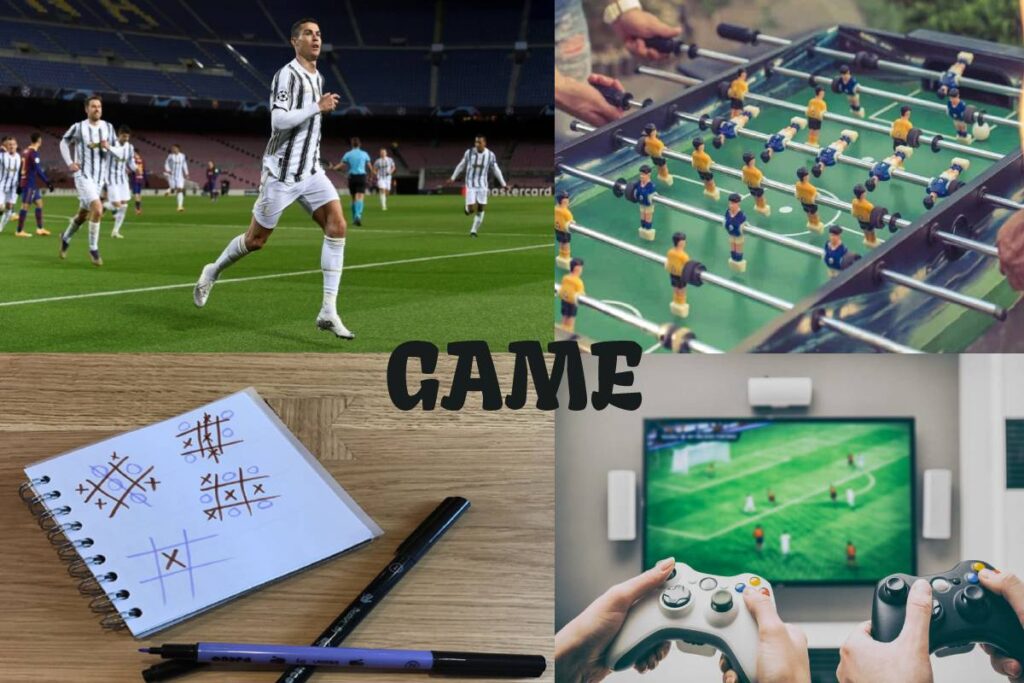Table of Contents
What is a Game?
- The term Game comes from the Latin focus, which means something like a joke.
- Also, it is an activity carried out by human beings which involves the development of the mind and the body, with a playful sense, of distraction, fun, and learning.
- Games act as a stimulus for mental activity and practicality, to the extent that, in almost all cases, they present in the same sequence.
- The player is in one circumstance and has to reach another by designing a mental strategy, which will then put into practice.
- That strategy limits by the rules and guidelines that the game presents, which give it a framework.
- The game generally develops because it acquires its educational character: the child learns to build strategies and adapt to the resources and conditions that he has and knows in advance.
Types of Games
The games that the person encounters as they develop correspond to different classes:
1. Table games
- Often practiced using a board and generally by a small number of people (usually two to six).
- Such is the case with ludo, checkers, and chess.
- They have a vital component of strategy, but it is often complemented by a significant amount of chance, as in those in which we use dice.
- This group could also include card games, such as poker, the canasta (both use the so-called French cards), or the fifteen broom (Spanish cards).
2. Sports games
- They are practiced spontaneously or directed by teachers and coaches, in open spaces, and with the body.
- In general, in addition to the body, there is some other object.
- Although sometimes it is limited to the competencies for the development of purely physical ability.
- They can be both individual and group and always complement the physical skill aspects with strategy and a calm mind to think about doing it.
- Schools, families, and even the States, from their Sports Secretariats, are in charge of spreading.
- This type of game among young people is very popular.
3. Video game
- We make it from digital tools, manifested through a screen.
- They did not practice them until the end of the 20th century.
- In some cases, they coincide with those included in the previous categories.
- Still, they offer virtually due to their eventual complexity and non-compliance with the primary general characteristics of the game.
4. Games of chance
- It groups all those games that depend on the lucky, without the significant intervention of individual skill.
- The lottery is the classic example of this kind of game.
Benefits
1. Encourages creativity
- The game allows them to let their imagination run wild and create their fantasy worlds.
- Children have the freedom to explore new possibilities, think out of the box, and come up with solutions.
- Also, it helps them get to know themselves.
- According to The Genius of Play on a survey, “successfully navigating an increasingly complex world will require creativity more than any other skill.”
2. Develop physical skills
- Physical play is one of the most memorable aspects of childhood, motivated by active play, essential for children’s physical development.
- It helps children hone their coordination, balance, gross motor skills.
3. Express and process emotions
- Play is a way for children to express their vision of the world.
- Their scenarios, characters, and imaginary plots match their emotional state and help them learn to speak and regulate their feelings.
- Children learn to cope with their emotions as they act out fear, frustration, anger, and aggression in a situation they control.
- It is also an opportunity for them to practice empathy and understanding.
4. Improve social skills
- Play also encourages children’s social relationships, as it encourages them to communicate with others.
- Either with secret languages, instructions, discussions, team challenges, conflict resolution.
5. Improve cognitive skills
- From birth to the age of three, children’s brains develop faster than at any other time in their lives.
- It is ideal to truly learn and understand cognitive skills, such as paying attention, reasoning, remembering things they have learned and experienced and motor skills.
6. Communication Skills
- By playing with others, children learn the art of communication.
- They come to recognize both verbal and non-verbal language – facial expressions, body language.


